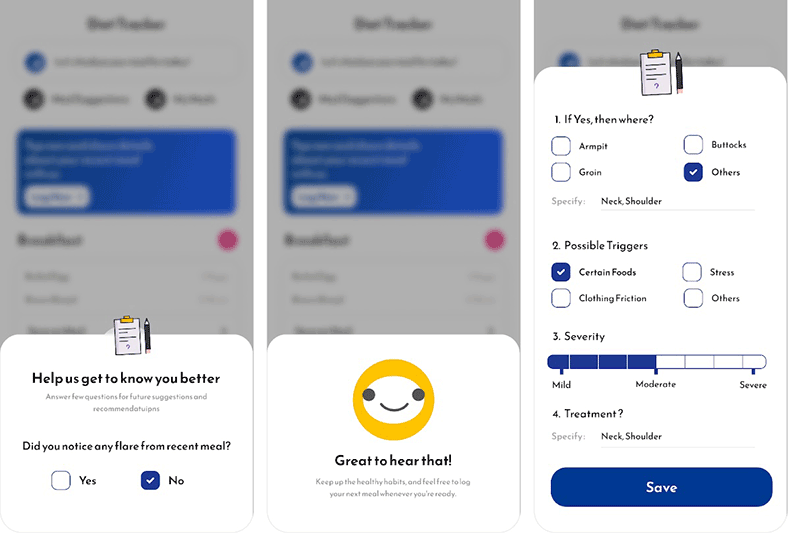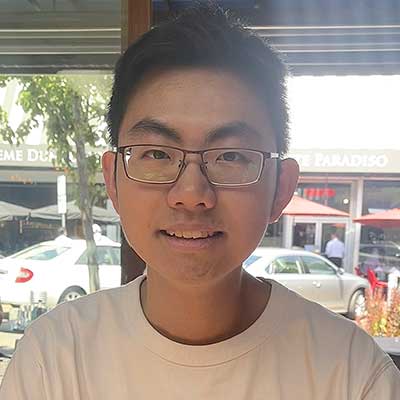Khoury News
Khoury researchers pioneer AI model to detect painful skin condition flare-ups
For the 1% of the world's population battling hidradenitis suppurativa, the condition is painful, persistent, and poorly understood. Now a group of researchers believes AI can lend a helping hand.

Hidradenitis suppurativa (HS), sometimes known as acne inversa, causes inflamed nodules, abscesses, and scarring in some of the body’s most sensitive areas. Beyond physical suffering, patients face isolation, delayed diagnosis, and limited treatment options. Stigma often prevents patients from seeking help, and when they do, many are misdiagnosed. Despite its prevalence — it affects nearly 1% of the global population — HS remains poorly understood, as researchers have lacked the structured, large-scale data necessary to identify its hidden triggers or predict its flare-ups.
A new Khoury-led study tackles the HS challenge with an AI-driven, interdisciplinary approach. By combining generative AI with advanced machine learning, a team of researchers including Divya Chaudhary, Shagun Saboo, Peng Zhang, and Rishabh Jain created the first predictive models for HS flare-ups.
“This disease not only gives patients painful nodules filled with pus, but it keeps coming back — even after surgery,” said Saboo, a recently graduated master’s student in data science. “There is no cure, and many people don’t even know they have it. That’s why we felt it was necessary to bring this disease out into the open.”
The team, which included Khoury researchers based in Boston and Seattle, titled their study “When Pain Hides in Silence: ML-Driven Flare-Up Prediction for Hidradenitis Suppurativa Using Synthetic Patient Data” and published it at IJCAI in August. It includes the results of a 65-question survey covering diagnosis history, treatment response, lifestyle habits, environmental exposure, and psychological impact. Using GPT-4o, the team generated 10,000 synthetic patient profiles to simulate diverse experiences of HS sufferers.

“Synthetic data is not real patient data, but it is statistically realistic,” explained Chaudhary, an assistant teaching professor at Northeastern’s Seattle campus. “This isn’t a replacement for clinical data, but a bridge. It helps us move fast while respecting patient privacy, and it gives other researchers a starting point.”
READ: Assistant teaching professor Divya Chaudhary pioneers novel melanoma detection method
The researchers tested a range of predictive methods, from decision tree, random forest, and XGBoost to advanced recommendation-based architectures.
“We tested six models overall,” said Zhang, now a software engineer at Meta. “Random forest performed best among the traditional models. But among the advanced recommender systems, our customized YouTube recommendation model gave the strongest overall results.”

These models highlighted significant predictors of flare-ups, including pregnancy and postpartum changes, hair removal methods, occupational factors, and environmental exposures such as chlorinated water. The findings aligned with what patients and clinicians have long suspected but lacked evidence to quantify.
The team is already translating their findings into a mobile tool called HSBuddy, which aims to give patients actionable recommendations tailored to their routines.
“Our app takes in daily journal-style inputs about diet, activity, or time outdoors,” explained Jain, now a software engineer at Chewy. “Based on that, it recommends what to avoid the next day to reduce flare-ups.”

For now, the dataset remains synthetic, but the researchers see it as a crucial first step toward larger, clinically validated systems.
“Right now, the data itself may not help doctors directly, but it’s invaluable for researchers trying to identify triggers or design predictive tools,” Saboo said. “There’s no dataset like this available for HS.”
“This particular paper is about finding trigger points — what foods, environments, or behaviors worsen HS,” Chaudhary added. “That information can feed into future clinical studies and eventually guide physicians.”
Looking forward, the team hopes to integrate real-world clinical records, wearable sensor data, and genetic information.
“We already have the HSBuddy app built, ready to be powered by real patient data once available,” Chaudhary said. “Right now, it’s running on synthetic data, but once clinical records and sensor data are integrated, the predictions will become even stronger.”
The Khoury Network: Be in the know
Subscribe now to our monthly newsletter for the latest stories and achievements of our students and faculty